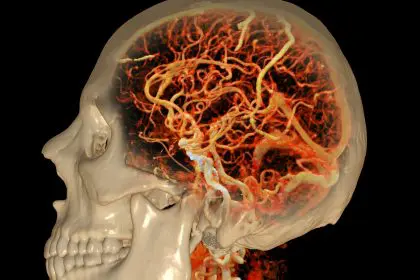That noticeable bulge around your belly button might seem harmless at first, but umbilical hernias can develop into serious medical situations requiring surgical intervention. Understanding when this common condition crosses the line from manageable to urgent helps protect your health and prevents potentially life-threatening complications.
Umbilical hernias occur when tissue pushes through a weak spot in the abdominal wall near the navel, creating a visible protrusion that may come and go or remain constant. While many cases resolve naturally or remain stable for years, specific warning signs indicate when surgical repair becomes necessary rather than optional.
The anatomy behind umbilical hernias
The umbilical area represents a natural weak point in the abdominal wall where blood vessels once connected a developing baby to the placenta. After birth, this opening typically closes completely, but sometimes the muscle and tissue don’t seal properly, leaving a gap where internal organs can push through.
This weakness can remain dormant for decades before manifesting as a hernia, or it can appear shortly after birth when the umbilical cord stump heals. The size and severity of hernias vary dramatically, from small, barely noticeable bumps to large protrusions that significantly alter the belly button’s appearance.
Critical warning signs that demand surgical attention
Several specific symptoms indicate when an umbilical hernia requires immediate surgical intervention rather than continued observation. These warning signs often develop gradually but can also appear suddenly, making awareness crucial for timely treatment.
- Severe, persistent pain develops around the hernia site. While mild discomfort is common with hernias, intense pain that doesn’t subside with rest or position changes signals potential complications. This pain often feels sharp, stabbing, or burning and may worsen with movement, coughing, or straining.
- The hernia becomes hard, tender, and impossible to push back. Normally, umbilical hernias feel soft and can be gently pressed back into the abdomen when lying down. When the protruding tissue becomes firm, painful to touch, and refuses to return to its normal position, this indicates incarceration or strangulation.
- Nausea and vomiting accompany hernia symptoms. These digestive symptoms suggest that intestinal tissue trapped in the hernia is becoming compromised. The combination of hernia pain with persistent nausea or vomiting requires immediate medical evaluation.
- Skin color changes appear over the hernia. Red, purple, or dark discoloration of the skin covering the hernia indicates compromised blood flow to the trapped tissue. This serious complication can lead to tissue death if not addressed promptly through surgical intervention.
- The hernia rapidly increases in size. While hernias typically grow slowly over months or years, sudden enlargement within days or weeks suggests the weakness is expanding and more tissue is pushing through. Rapid growth often precedes more serious complications.
- Bowel movement changes occur alongside hernia symptoms. Difficulty passing gas, constipation, or changes in stool consistency when combined with hernia pain may indicate intestinal obstruction. This combination requires urgent surgical evaluation.
- Fever develops with hernia-related symptoms. An elevated body temperature along with hernia pain, tenderness, or skin changes suggests infection or tissue death within the trapped organs. This represents a medical emergency requiring immediate surgical treatment.
Age-specific considerations for surgical timing
The decision for surgical intervention varies significantly between infants, children, and adults, with different risk factors and healing considerations for each age group.
In newborns and infants, umbilical hernias often resolve naturally as abdominal muscles strengthen and the umbilical opening closes. Most pediatric hernias that appear before age one will disappear by the second birthday without intervention. However, surgical repair becomes necessary if the hernia persists beyond age four, grows larger than two centimeters, or causes complications at any age.
For adults, umbilical hernias rarely resolve on their own and typically require surgical repair to prevent complications. Adult hernias tend to worsen over time due to increased abdominal pressure from daily activities, making early intervention often preferable to waiting for emergency situations.
Size and complexity factors affecting surgical decisions
The physical characteristics of an umbilical hernia significantly influence whether surgery becomes necessary and when it should be performed. Size represents one of the most important factors, with larger hernias carrying higher risks of complications.
Small hernias less than one centimeter in diameter may be monitored safely in adults without symptoms, especially in older individuals with other health conditions that increase surgical risks. However, even small hernias require surgery if they become symptomatic or show signs of incarceration.
Large hernias exceeding four centimeters typically require surgical repair regardless of symptoms due to the high risk of intestinal obstruction and strangulation. These significant defects in the abdominal wall rarely improve without intervention and often worsen progressively.
Lifestyle factors that accelerate surgical need
Certain activities and conditions increase abdominal pressure, making umbilical hernias more likely to cause complications that require surgical intervention. Understanding these risk factors helps individuals make informed decisions about timing for elective repair.
Heavy lifting, chronic coughing, and frequent straining during bowel movements all increase pressure within the abdomen, potentially pushing more tissue through the hernia opening. People whose work or hobbies involve these activities may benefit from earlier surgical repair to prevent emergency situations.
Pregnancy presents unique challenges for women with umbilical hernias. The expanding uterus increases abdominal pressure throughout pregnancy, often causing existing hernias to enlarge or become symptomatic. While hernia repair during pregnancy is generally avoided unless complications arise, planning surgical treatment before conception or after delivery is often recommended.
Obesity significantly increases both the likelihood of developing umbilical hernias and the risk of complications. Excess abdominal weight creates constant pressure on the hernia site, making conservative management less effective and surgical repair more challenging but often necessary.
Emergency situations requiring immediate surgery
Certain complications transform umbilical hernias from manageable conditions into surgical emergencies. Recognizing these situations can prevent serious consequences including tissue death, infection, and life-threatening obstruction.
Incarcerated hernias occur when tissue becomes trapped in the hernia opening and cannot return to its normal position. This situation causes significant pain and requires prompt surgical release to prevent progression to strangulation.
Strangulated hernias represent the most serious complication, occurring when blood supply to trapped tissue becomes cut off. Without immediate surgical intervention, the affected tissue dies, leading to infection, perforation, and potentially fatal complications.
Bowel obstruction can develop when intestinal tissue becomes twisted or compressed within the hernia, preventing normal digestion and waste elimination. Complete obstruction requires emergency surgery to restore normal intestinal function and prevent serious complications.
Recovery considerations that influence timing
The complexity of surgical repair and expected recovery time often factor into decisions about when to perform umbilical hernia surgery. Elective repair during stable periods allows for better planning and often results in smoother recoveries compared to emergency procedures.
Mesh repair techniques used for larger hernias require longer healing times but provide stronger, more durable results. Planning surgery during periods when physical activity restrictions won’t significantly impact work or family responsibilities improves overall outcomes.
Simple suture repairs for smaller hernias typically involve shorter recovery periods but may have higher recurrence rates. The choice between techniques depends on hernia size, patient factors, and individual circumstances.
Making the decision for surgical intervention
The choice to pursue surgical repair involves weighing the risks of continued observation against the benefits of definitive treatment. This decision becomes clearer when warning signs appear, but often requires careful consideration in asymptomatic cases.
Quality of life factors play important roles in surgical timing. Hernias that limit physical activities, cause embarrassment, or create anxiety about potential complications may warrant repair even without severe symptoms.
Individual health status significantly influences surgical recommendations. Younger, healthier individuals may benefit from earlier intervention, while older adults with multiple medical conditions might be advised to delay surgery unless complications develop.
The presence of any warning signs typically tips the balance toward surgical intervention, as the risks of continued observation often outweigh the risks of repair once complications begin developing.
Understanding these warning signs and risk factors empowers individuals to make informed decisions about umbilical hernia treatment while working with healthcare providers to determine the optimal timing for surgical intervention when it becomes necessary.

















